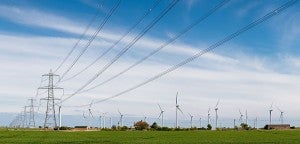There is no great disagreement that the U.S. energy system is transforming. With or without additional environmental regulations, like the U.S. Environmental Protection Agency’s (EPA) proposed Clean Power Plan, this transition is occurring. Our history and experience have demonstrated that we can weather it without threatening our uniform and non-negotiable commitment to reliability.
But to do that, we need to tap all of the tools at our disposal to ensure a robust, reliable, and integrated energy system that is no longer dependent exclusively upon centralized, fossil fuel generation. Done right, the resulting change can deliver benefits to customers, the economy, the environment, electric companies, innovators, and workers alike.
EPA’s proposed Clean Power Plan would place national limits on carbon pollution from existing fossil fuel power plants for the first time ever. In doing so, it would create long-term market signals that will help drive investments in energy efficiency, demand response, and renewable energy for years to come – not only reducing carbon pollution from the power sector to 30 percent below 2005 levels by 2030, but also by putting us on a path to a more reliable and resilient energy system.
As a former Commissioner of the Ohio Public Utilities Commission and electric system operator, I understand preserving the reliability of electric service is a paramount public responsibility for energy and environmental regulators, and for the power companies they oversee. As a Commissioner, I served as vice chair of the Critical Infrastructure Committee, a member of the Electricity Committee, and on the Task Force for Environmental Regulation and Generation within the National Association of Regulatory Utility Commissioners (NARUC). I co-chaired the National Electricity Forum 2012 to modernize the nation’s electricity infrastructure. At the request of the Federal Energy Regulatory Commission (FERC) and the U.S. Senate Committee on Energy and Natural Resources, I have provided testimony on reliability of the bulk power system before both of those bodies.
Prior to my appointment to the Commission, I served for six years as the Deputy Director and then Director of the City of Columbus, Ohio Department of Public Utilities. My duties there included running the City’s electric distribution utility. This hands-on experience meeting the daily needs of electricity customers as both a regulator and a system operator – while protecting the financial integrity of the system – gives me a keen appreciation for the real-world demands and importance of system reliability.
From that perspective, perhaps the most critical feature of the proposed Clean Power Plan is the flexibility it provides to states and power companies to craft individualized compliance plans that reduce pollution while preserving and strengthening electric reliability. EPA’s approach gives clear guidance on what limits and metrics must be met, but leaves states the flexibility to design solutions that will boost the economy and meet those requirements as they see fit.
That flexibility acts as a built-in “safety valve,” affording each state multiple pathways for compliance and providing leeway for states to make plans that are appropriate to their unique circumstances. Moreover, this flexibility complements the robust framework of operating practices, market instruments, and planning processes that already exist to address short-term and long-term reliability issues.
Leading experts on energy policy and electric reliability have recently weighed in to confirm reducing carbon pollution goes hand in hand with electric reliability, thanks to the flexible structure of the Clean Power Plan and our existing reliability tools and processes. According to a recent report by The Brattle Group, the combination of the ongoing transformation of the power sector, the steps already taken by system operators, the large and expanding set of technological and operational tools available, and the flexibility under the Clean Power Plan are likely sufficient to ensure compliance will not come at the cost of reliability.
And, just last week, Dr. Susan Tierney – a former Assistant Secretary for Policy at the U.S. Department of Energy and former Commissioner of the Massachusetts Department of Public Utilities— joined two other energy policy experts in sending a letter and report to the Chairman of the Federal Energy Regulatory Commission (FERC) concluding:
Evidence does not support the argument that the proposed CPP will result in a general and unavoidable decline in reliability.
The report provides examples of recent instances in which grid operators, FERC, and other entities have effectively used existing processes and tools to deftly address other kinds of reliability challenges in recent years, some of which were significant and unanticipated.
In 45 years of implementing the Clean Air Act, clean air standards have never caused the lights to go out. And nothing about the proposed Clean Power Plan – with all of its tremendous flexibility – will alter that record.
That’s a remarkable testament to the institutions and processes that exist to protect reliability, as well as the careful process EPA uses in developing clean air standards – and it is great news for families and communities who want and deserve clean air in addition to reliable, affordable electricity. The Clean Power Plan, like our other vital clean air standards, will help deliver both.











One Comment
As a natural life force, they symmbolize growth for love, health, wealth and practically all areas of your
life. Do not be surprised if such pairings produce a hyper active child.
But whatever company you use, be sure to prominently state your email and website address, or a join me on Facebook
or othuer social networking site link.
Here iss my web page – Maid Service Long Island